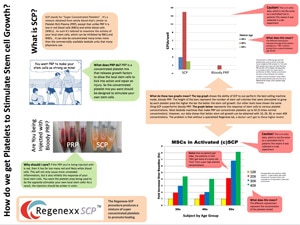What is PRP? Your Guide to Platelet Rich Plasma Treatments
You’ve likely heard about PRP. It’s all the rage with professional athletes and weekend warriors alike. So what is PRP and is it one thing, or are there different kinds?
What is PRP, or Platelet Rich Plasma?
The term PRP applies to a wide variety of similar, but quite different preparations made from blood platelets. Platelets are the little packets of growth factors and other natural healing molecules that help clot your blood. So if you were to get a paper cut, they would both stop the blood flow and also release healing growth factors to help get the local cells on course to heal the skin. PRP is created by centrifuging the whole blood drawn from an arm vein (or anywhere else) and concentrating the platelets in the serum. The idea is that more of a good thing is better than less.
How is PRP made?
About 95% of medical practices that offer PRP make it in a push button, automatic centrifuge. The advantage of this type of processing is that it’s simple for the medical practice. Literally all the physician needs to know about how PRP is made is where to place the sample and where the “On” button is located.
The downside to this approach is that the PRP produced is “one size fits all”. For example, if a patient is more or less hydrated, this is not accounted for in these systems, so what’s produced on one day in terms of platelet concentration will be different than on another day, simply because of how much water the patient had to drink. This is because the area where the platelets are located in the centrifuged blood will fluctuate based on the water content of the sample.
Are there Different Kinds of PRP?
Yes. There are stark differences between different PRP preparations. The first thing you’ll notice is that some samples are red, while others are more amber. The red PRP injections contain copious red blood cells and white blood cells. While no one is 100% sure if one type is clinically better than the other at this point, what is clear is that red PRP shots promote much more inflammation than amber PRP shots without red or white blood cells. In addition, our lab research clearly showed that stem cells exposed to both types of PRP did poorly with red PRP and much better with amber PRP.
Can a Better PRP be Created with a Lab?
Absolutely, but as noted above, most physicians who use PRP don’t bother with anything more than buying a simple automated machine. In our clinical experience, a lab in the medical practice can often accomplish a number of things that a bedside centrifuge cannot:
- The ability to adjust the processing to the unique properties of the patient sample
- Much higher concentrations of platelets than machines can muster
- The ability to customize various types of PRP and concentrations to address the specific needs of a patient.
The Benefits of PRP Injections at Regenexx
The other day I was injecting a low back patient who also needed a tendon and a knee injection. As I looked at the sterile tray of what was to be injected, I realized that I had three different platelet preparations on the sterile field. I also realized how unique Regenexx is in the world of PRP injections (or what we call SCP – super concentrated platelet) .
For example, for this patient I had:
- A 7X (7 times normal platelet concentration) amber PRP to inject into his tendons, as lower concentrations are used in this area. This means that the platelet concentration was 7 times over his normal baseline platelet count.
- A 20X amber PRP to inject into his knee joint. In our experience and based on our lab data, much higher concentrations of PRP are needed for successful joint treatments, especially in middle-aged and older patients who may have more significant arthritis. What’s interesting here is that no “one-size fits all” PRP machine on earth could have produced this sample, as most will only concentrate to about 7-10X max, and that’s with running the sample twice (i.e. not recommended by the manufacturer of the device).
The upshot? A PRP shot is not the same worldwide or within the United States. There are many different types. At Regenexx, we sometimes take for granted that we have so many options available to us and that we have spent a decade perfecting every aspect of these procedures. It’s easy to forget that we’re operating on an entirely different level than others when it comes to regenerative medicine procedures.
So why take the risk of getting an injection with something that just isn’t as advanced, when you can stack the deck in your favor and increase the chances of a full recovery with a Regenexx PRP procedure?

NOTE: This blog post provides general information to help the reader better understand regenerative medicine, musculoskeletal health, and related subjects. All content provided in this blog, website, or any linked materials, including text, graphics, images, patient profiles, outcomes, and information, are not intended and should not be considered or used as a substitute for medical advice, diagnosis, or treatment. Please always consult with a professional and certified healthcare provider to discuss if a treatment is right for you.

